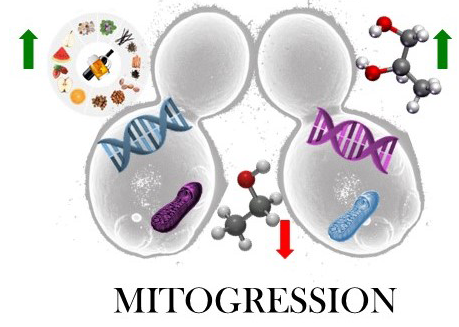Synthetic hybrids of six species
Authors: David Peris, William G. Alexander, Kaitlin J. Fisher, Ryan V. Moriarty, Mira G. Basuino, Emily J. Ubbelohde, Russell L. Wrobel, Chris Todd Hittinger
Journal: Nature Communications 11:2085
Year: 2020
Abstract: Allopolyploidy generates diversity by increasing the number of copies and sources of chromosomes. Many of the best-known evolutionary radiations, crops, and industrial organisms are ancient or recent allopolyploids. Allopolyploidy promotes differentiation and facilitates adaptation to new environments, but the tools to test its limits are lacking. Here we develop an iterative method of Hybrid Production (iHyPr) to combine the genomes of multiple budding yeast species, generating Saccharomyces allopolyploids of at least six species. When making synthetic hybrids, chromosomal instability and cell size increase dramatically as additional copies of the genome are added. The six-species hybrids initially grow slowly, but they rapidly regain fitness and adapt, even as they retain traits from multiple species. These new synthetic yeast hybrids and the iHyPr method have potential applications for the study of polyploidy, genome stability, chromosome segregation, and bioenergy.
Nature Research Bioengineering Community blog entry
Successful crosses
- The frequency of hybrid production by each cross is recorded in the table Raw_frequency_crosses. The data is used in Figure 3A
Parent genome contribution
- The compressed file winAvgDepth contains the individual files for the coverage values for each hybrid used to generate Figures 4A, 4B, and 6B
- The compressed file nuclear_sppIDerDepthPlot contains the individual files plotting coverage across nuclear genomes of reference strains. Plots are generated by sppIDer and used in Supplementary Figure 3
- The compressed file mito_sppIDerDepthPlot contains the individual files plotting coverage across mitochondrial genomes of references strains. Plots are generated by sppIDer and used in Supplementary Figure 4
Chromosomal aberrations and chromosome composition
- The table number_aberrations describes the chromosome losses, gains and aberrations inferred from sppIDer plots. The data is used in Figure 2A and 6A
- The compressed file Chromosome_composition contains the tables with the chromosome composition by species and the total number of chromosomes for each hybrid. The data was inferred from the sppIDer plots. Data was used for generating Figures 2B and 6C
Cell size and ploidy
- Raw brightfield microscopy images used to calculate 2-dimensional cell size are compressed in the Cell_size_raw_images file.The estimated cell area for each strains is described in table Cell_area_estimations. The data is used in Figure 3B.
- Cell volume estimations are described in table Cell_volume_increase_data. The data is displayed in Supplementary Table 2
- Raw fluorescence values from flow cytometry are described in table Flow_cytometry_fluorescence_data. The data is used in Supplementary Figures 5A, 5B, 5C.
Growth kinetic parameters
- Optical density measurements at 600nm are compressed in Optical_density_measurements. Date_growthcurve.csv contains the measurements and Date_growthcurve_layout.csv has information about the strain and media contained in each well.
- 20190819: Figures 3C and 3D.
- 20180911: Supplementary Figure 6.
- 20181113,20181130,20181210: Figure 5A and Supplementary Figure 8.
Droptests
- Raw droptest pictures are compressed in droptests file. The pictures were processed for Figure 5B
Cassette coverage distribution
- Coverage values for chromosome IV extracted from sppIDer outputs and coverage values for xylose cassette sequence calculated from raw reads using HybPiper were described in the compressed files ChrCovWindow and CassetteCov, respectively. The data is used in Supplementary Figure 7B.
Illumina reads
Whole genome sequences are deposited in SRA under accession number Bioproject PRJNA476226
Press Notes
-
CSIC - Abril 2020 - Una nueva tecnología obtiene levaduras a la carta para mejorar la producción de bebidas alcohólicas y bioenergía
-
UW-Madison/GLBRC News - April 2020 - Researchers create hybrids of six yeast species to combine useful traits
-
Anales Sectoriales - April 2020 - El CSIC desarrolla una nueva tecnología para obtener levaduras a la carta para mejorar la producción de bebidas alcohólicas
-
Renewable Energy Magazine - April 2020 - Levaduras a la carta para producir vino y biocarburantes

